| |
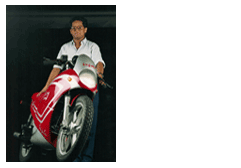
|
Enfield Fury
My first design! Though I had been sketching and doodling cars and bikes since I was knee high to a grasshopper, it was only in 1990 that I decided to actually translate one of my renderings into reality. With the rage for an all-enclosed look pioneered by Bimota, and followed up by the Ducati Paso, I too was inspired into sketching a sweepy all-enclosed design. India’s most modern bike the, the Enfield Fury (nee Zundapp 175) seemed the best basis for such an exercise. So I acquired one and commissioned a very talented Ganpati idol maker, B D Rampure, to carve out the shape in (wet) idol-making clay! From which we made a ‘female’ mould that gave us the fiberglass parts that made up the form that you see. The bike was used for a Red Eveready television commercial. |
|
| Hero Lynx
The Managing Director of Hero Motors, Pankaj Munjal, was quite taken up by the design of the Enfield Fury and he asked me to redesign his Hero Puch two-wheeler into a sports bike! Using the design on the Fury as inspiration, I prototyped the Lynx concept, whereby, I retained the frame, the powertrain and the alloy wheels, and clothed it all in an all-enveloping body that transformed a step-thru design into a so-called sports bike look. Translating the concept into production reality was beyond the capabilities of Hero Motors then and sadly the concept remained just a one-off. Instead, another design that I did on the Hero Puch basis (to make the two-wheeler a more elaborate step-thru design to rival the Bajaj M80) the Shakti, went into production with some modifications. |
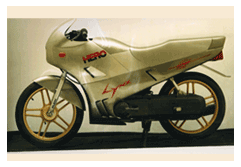
|
|
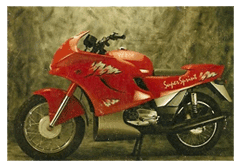
|
Yezdi 250 Super Sprint
Boman Irani, the most enthusiastic family member of the Irani family that owned and ran Ideal Jawa (the makers of the Jawa 250
and later, the Yezdi 250 motorcycles) commissioned a redesign of the out-of-date Jawa 250 Roadking that they were making in the
early 1990s. Retaining the frame and tank of the original, I designed a fairing to match the redesigned seat base and rear fender.
The bike was exhibited at the 1994 edition of the Auto Expo and was to be launched in 1995, but before the bike could go into series
production Ideal Jawa closed down. |
|
| Hindustan Contessa hatch
Hindustan Motors approached me to work on two proof-of-concept prototypes: one was a low-cost light truck derived from the chassis-mechanicals of the Hindustan Trekker; the other was to develop a shorter, more usable five-door hatchback derivative of the Contessa. The former eventually became the successful Hindustan RTV light truck. But the Contessa hatchback remained just a one-off when Hindustan signed up with Mitsubishi to assemble the Lancer under license. Not only was the rear extensively modified, but the front too was shortened and lowered to give the Contessa a more modern face. |
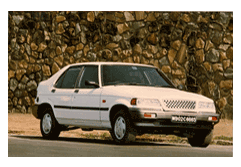
|
|
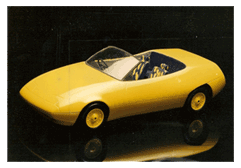
|
Stenella
Though I had been working on several two-wheeler design projects since 1990, what I really dreamt of was designing my own
little two-seater sports convertible. With that in mind I acquired a Sipani Dolphin as I believed that the car provided the
perfect basis to make a compact two-seater. In the meantime, I got B D Rampure to translate my drawings and renderings into a scale model.
(In fact, it was his ability to convert my renderings into this scale model that gave me the confidence to work on making prototypes in
fiberglass using the 'wet clay' method). This model then became the basis to make a full-size car. My Dolphin became the Stenella
(a beautiful species of Dolphins), which became the progenitor of the San Storm. |
|
| San Storm coupe
But before the Stenella could be completed, Milind Thakker, the owner of San Engineering & Locomotive, saw the almost-complete two-seater,
liked it very much and decided to purchase it with the idea of putting it into production. But productionising it wasn't easy and after two
years of toiling it was decided that professional help was needed. That's when the project was taken by me to the Le Mans Design group
consisting of designer Gerard Godfroy, engineer Philippe Beloou and prototyper Christophe Bihr. Work began in the summer of 1996, and by
September 1998, the San Storm coupe was ready. |
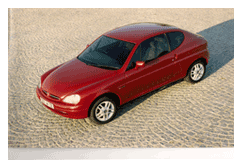
|
|

|
San Storm cabriolet
With the realization that 848cc Reliant/Sipani Dolphin engine wasn’t sufficient for a car that looked so good, the decision was taken to power the car with a 1.2-litre Renault engine. The necessary redesign of the chassis to shoehorn the transverse Renault powertrain into the San’s chassis which had been designed for a longitudinally-located engine and rear-wheel-drive, along with prototyping of the convertible version of the San was completed in three month, just in time for the two cars to be unveiled in January 1998 at the Delhi Auto Expo. |
|
| |
| |
|
|